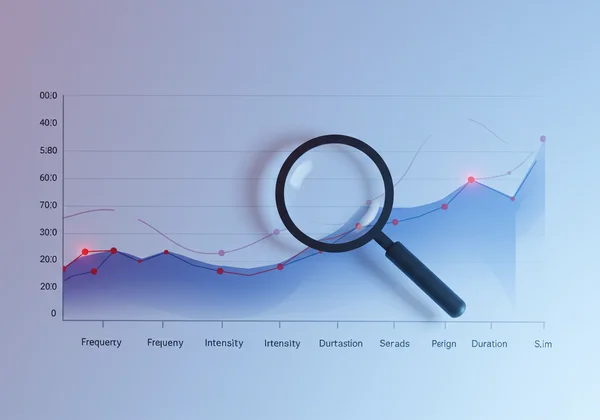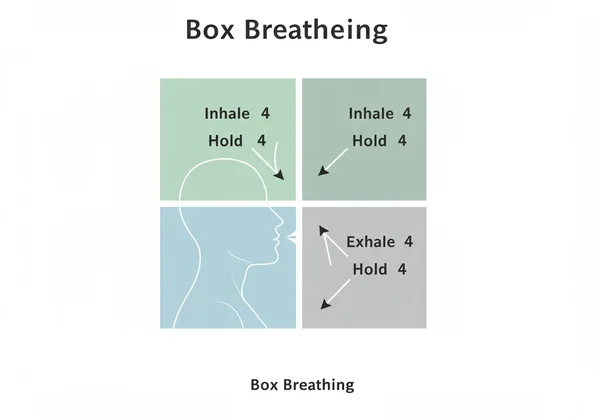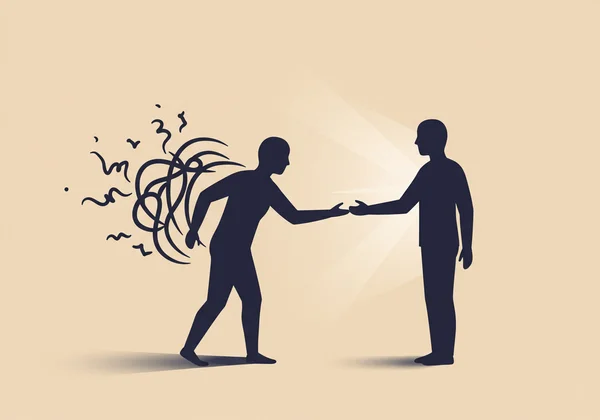Anger Test Results: 7 Steps to Emotional Self-Awareness
You’ve just taken a significant first step. After answering the questions in our anger test, you have a summary of your emotional patterns in hand. But the big question now is, what to do with anger test results? Viewing these results isn't the finish line; it’s the starting line of a powerful journey toward greater emotional self-awareness and control.
This guide is your roadmap. We will walk through seven clear, actionable steps to help you interpret your results, connect them to your daily life, and begin implementing strategies for healthier emotional management. This isn't about judging your anger but understanding it as a valuable source of information. If you haven't taken the test yet or want a fresh baseline, you can always start with our free anger test.
Deciphering Your Anger Test Results: A Deeper Look
Your results are more than just a score; they are a snapshot of your unique emotional landscape. The first step is to look beyond a single number and explore the rich details provided. This initial analysis is crucial for building a foundation of self-awareness, which is essential for any meaningful change.

Understanding Your Anger Patterns, Frequency, and Intensity
Instead of asking "Am I an angry person?", a more helpful question is "How does anger show up in my life?" Your results from the anger assessment test likely touch on several key dimensions:
- Frequency: How often do you experience feelings of anger? Is it a daily occurrence or something that surfaces only in specific, high-stress situations?
- Intensity: When you do feel angry, how powerful is it? Is it a mild irritation or an overwhelming rage? Recognizing the intensity helps you gauge the level of emotional energy you're expending.
- Duration: How long does your anger last? Does it flare up and disappear quickly, or does it simmer for hours or even days?
By breaking down your anger into these components, you begin to demystify it. It stops being a single, scary emotion and becomes a set of measurable patterns you can begin to understand and influence.
Identifying Common Triggers and Your Unique Responses
Your report is a mirror reflecting your reactions to certain stimuli. Now is the time to identify what those stimuli, or triggers, are. Triggers can be external, like a traffic jam or criticism from a colleague, or internal, like feelings of disappointment or memories of a past event.
Ask yourself:
- What specific situations mentioned in the test questions resonated most with me?
- Do I notice a pattern? For example, does my anger spike when I feel disrespected, ignored, or helpless?
- How do I typically respond when triggered? Do I withdraw, argue, or engage in passive-aggressive behavior?
Connecting your test results to these real-world scenarios is where true insight begins. It’s the bridge between data and daily experience. Recognizing your triggers is not about avoiding them, but about preparing yourself to respond differently when they arise. For a deeper look into your personal triggers, consider the personalized analysis available after you complete the test.
Cultivating Emotional Self-Awareness: Your Journey Begins
With a clearer understanding of your results, the next phase is about integrating this knowledge. Emotional self-awareness is the ability to recognize your own emotions and their effects on your thoughts and behavior. Your test results are the perfect catalyst for developing this crucial skill.

The Power of Reflective Journaling After Your Test
Don’t let your insights fade away. Grab a notebook or open a document and spend 15 minutes journaling. This isn't about writing a perfect essay; it's about honest reflection. Use these prompts to get started:
- "What part of my results surprised me the most, and why?"
- "Describe a recent time I felt angry. How does it connect to my test results regarding intensity and triggers?"
- "If my anger had a voice, what would it be trying to tell me right now? Is it signaling an unmet need or a boundary that has been crossed?"
Reflective journaling transforms abstract data into a personal narrative. It helps you process the information on a deeper level and uncovers underlying beliefs or needs that fuel your anger. This practice is one of the most effective first steps you can take.
Connecting Test Insights to Real-Life Situations
Awareness grows when you actively observe yourself in your daily environment. For the next week, become a gentle observer of your own emotional state. When you feel a flicker of irritation or frustration, pause and mentally note it.
Think of it as a field study where you are the subject. If your results indicated high intensity, notice the physical sensations that come with it—a clenched jaw, a faster heartbeat, tense shoulders. If they pointed to specific triggers like feeling controlled, watch for those situations at work or home. This practice of mindful observation, prompted by your anger issues test results, strengthens your ability to catch anger before it escalates.
Implementing Initial Anger Management Strategies Today
Understanding is powerful, but action is transformative. You don't need to wait for a major overhaul to start managing your anger more effectively. An anger control test is designed to empower you with knowledge, and these initial strategies are designed to help you apply it immediately.

Quick Breathwork and Grounding Techniques for Immediate Calm
When anger surges, your body enters a state of high alert. Simple physiological techniques can interrupt this response and give your rational brain a chance to catch up. These are not about suppressing anger, but about creating space to choose your response.
One of the most effective anger control techniques is Box Breathing:
- Inhale slowly through your nose for a count of four.
- Hold your breath for a count of four.
- Exhale slowly through your mouth for a count of four.
- Hold the empty breath for a count of four.
- Repeat 4-5 times.
This technique activates your parasympathetic nervous system, which promotes a state of calm. It's discreet, can be done anywhere, and is incredibly effective at de-escalating intense emotions in the moment.
Practicing Mindful Responses Instead of Reactive Outbursts
A reactive outburst is driven by pure emotion, often leading to regret. A mindful response, however, is a choice. The key is creating a small pause between the trigger and your reaction. This pause is your window of opportunity to choose a more constructive path.
When you feel triggered, try the S.T.O.P. technique:
- Stop what you are doing.
- Take a breath.
- Observe what is happening inside you (your thoughts, feelings, and physical sensations).
- Proceed with a choice that aligns with your values, rather than your initial impulse.
Practicing mindful responses is a skill that strengthens over time. Each time you manage to pause, you are rewiring your brain for more thoughtful and less reactive behavior. The journey to understand your anger is built on small, consistent steps like this.
When to Seek Further Guidance: Recognizing Deeper Anger Issues
An online assessment is an excellent tool for self-discovery, but it's also important to recognize its limitations. It provides insights, not a diagnosis. Part of responsible self-awareness is knowing when it's time to seek professional support for what might be more persistent anger problems.

Understanding When Anger Becomes a Problematic Cycle
Anger becomes problematic when it starts to negatively and consistently impact your life. How do you know if you have anger problems? Look for signs of a problematic anger cycle:
- Relationship Damage: Your anger is causing frequent conflicts with loved ones, friends, or colleagues.
- Professional Consequences: You're facing issues at work or school due to your temper.
- Health Issues: You experience chronic stress, high blood pressure, or other physical symptoms linked to anger.
- Loss of Control: You often say or do things you later regret, or your anger feels explosive and uncontrollable.
If these patterns feel familiar, it's a strong signal that your anger warrants more focused attention. An online anger test can be the first step in identifying these patterns.
Exploring Professional Support and Ongoing Resources
If your anger feels overwhelming, seeking help is a sign of strength and self-respect. A therapist, counselor, or anger management group can provide you with structured support, personalized strategies, and a safe space to explore the roots of your anger.
Think of our anger test tool as a preliminary screening. It gives you valuable data to bring to a professional, helping you start the conversation with a solid foundation of self-awareness. It's a courageous step toward lasting emotional health and well-being.
Your Path to Mastering Anger Starts Now
Your anger test results are not a final judgment. They are a personalized map, and you are just beginning to explore the territory. By deciphering your patterns, cultivating self-awareness, implementing practical strategies, and knowing when to seek support, you are turning information into wisdom.
The goal isn't to eliminate anger—it's a natural and sometimes healthy emotion. The goal is to understand it, respect its message, and manage it so that you are in control, not the other way around. Continue this journey of self-discovery, and remember that every step you take is progress. To learn more or to track your progress over time, feel free to revisit the anger test online.
Frequently Asked Questions About Anger & Your Results
Can our anger test diagnose me with an anger disorder?
No. It is very important to understand that our scientifically-backed assessment is an educational and self-exploration tool, not a diagnostic instrument. While it can provide significant insights into your emotional patterns and tendencies, it cannot and should not be used to self-diagnose conditions like Intermittent Explosive Disorder or any other clinical disorder. A formal diagnosis can only be made by a qualified healthcare professional, such as a psychiatrist, psychologist, or licensed therapist.
How can I know if I have anger problems beyond my test results?
Your test results are a great starting point, but the clearest indicators are found in your daily life. Reflect on the real-world impact of your anger. Is it damaging your relationships, hurting your career, or negatively affecting your physical or mental health? If you consistently find that the consequences of your anger are causing you distress or making your life more difficult, it's a strong sign that it's a problem worth addressing more deeply. Our multidimensional anger test can help you start identifying these impacts.
What are the best first steps to control my anger after taking a test?
The best first steps involve both insight and action. Start by journaling about your results to deepen your understanding of your personal triggers and patterns. Simultaneously, begin practicing immediate calming techniques, such as box breathing, to manage anger in the moment. The combination of self-reflection (understanding the "why") and practical techniques (managing the "how") creates a powerful foundation for change.
Why do I still feel so angry sometimes even after understanding my patterns?
Understanding is the first, crucial step, but it is not the last. Emotional patterns are often deeply ingrained over many years. Simply knowing you have a pattern doesn't automatically change the reflexive, in-the-moment emotional response. Lasting change comes from consistent practice of new behaviors, like pausing before reacting and using calming techniques. Be patient and compassionate with yourself; you are learning a new skill, and like any skill, it takes time and repetition to master.